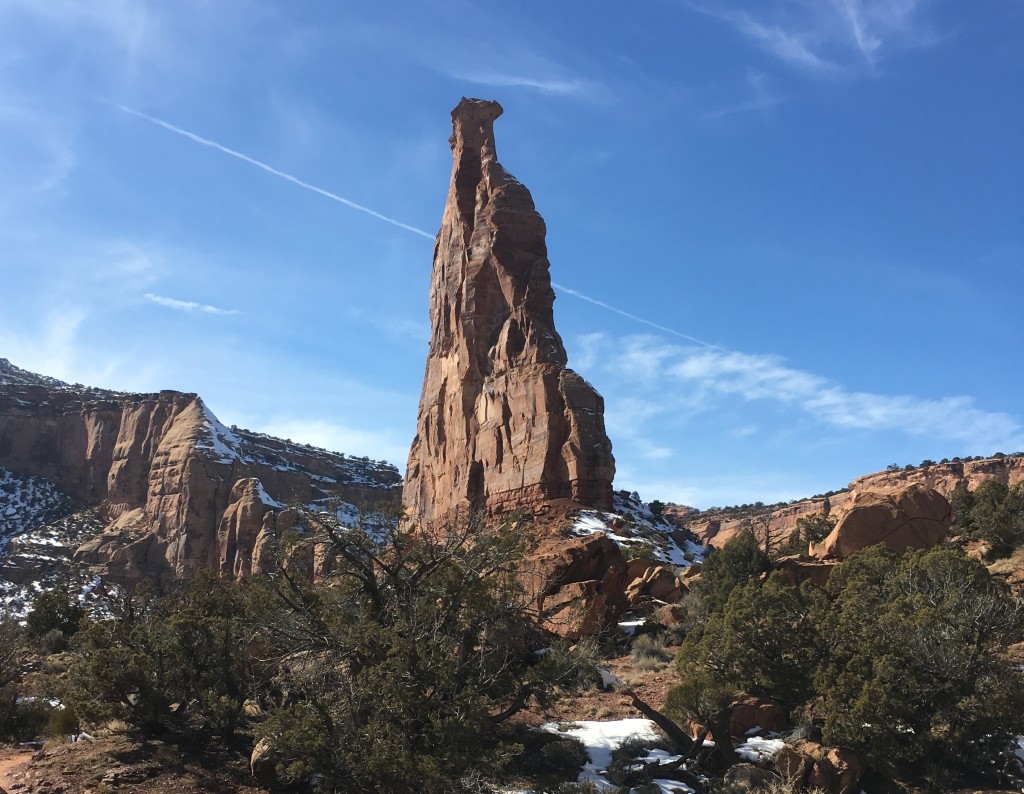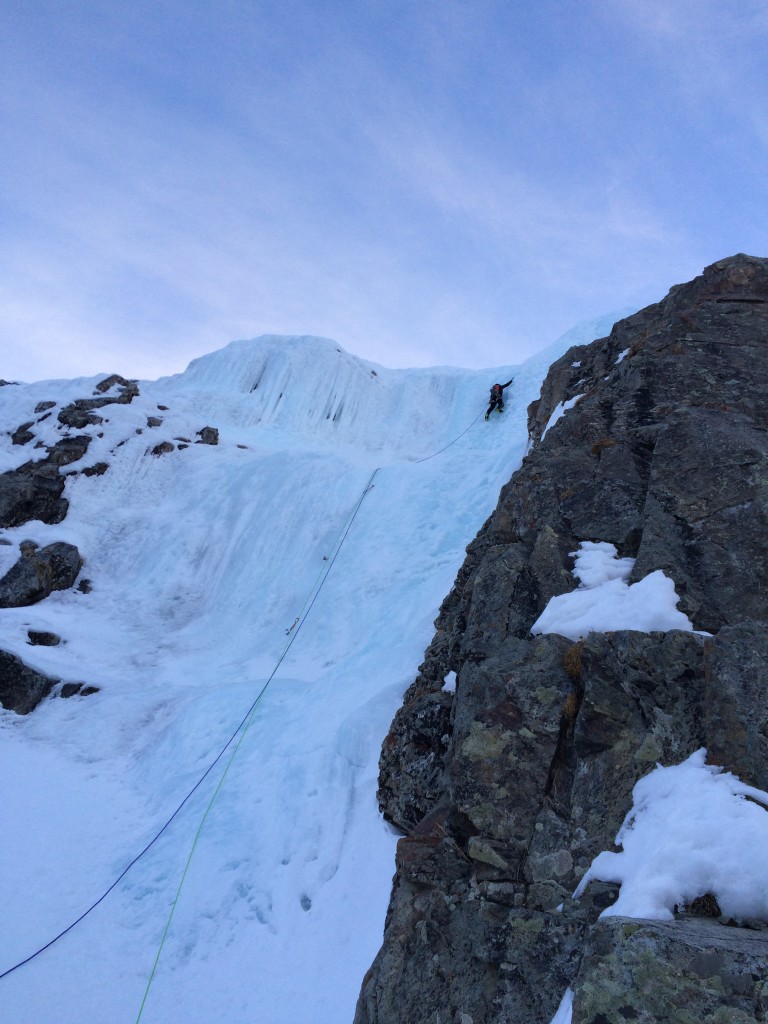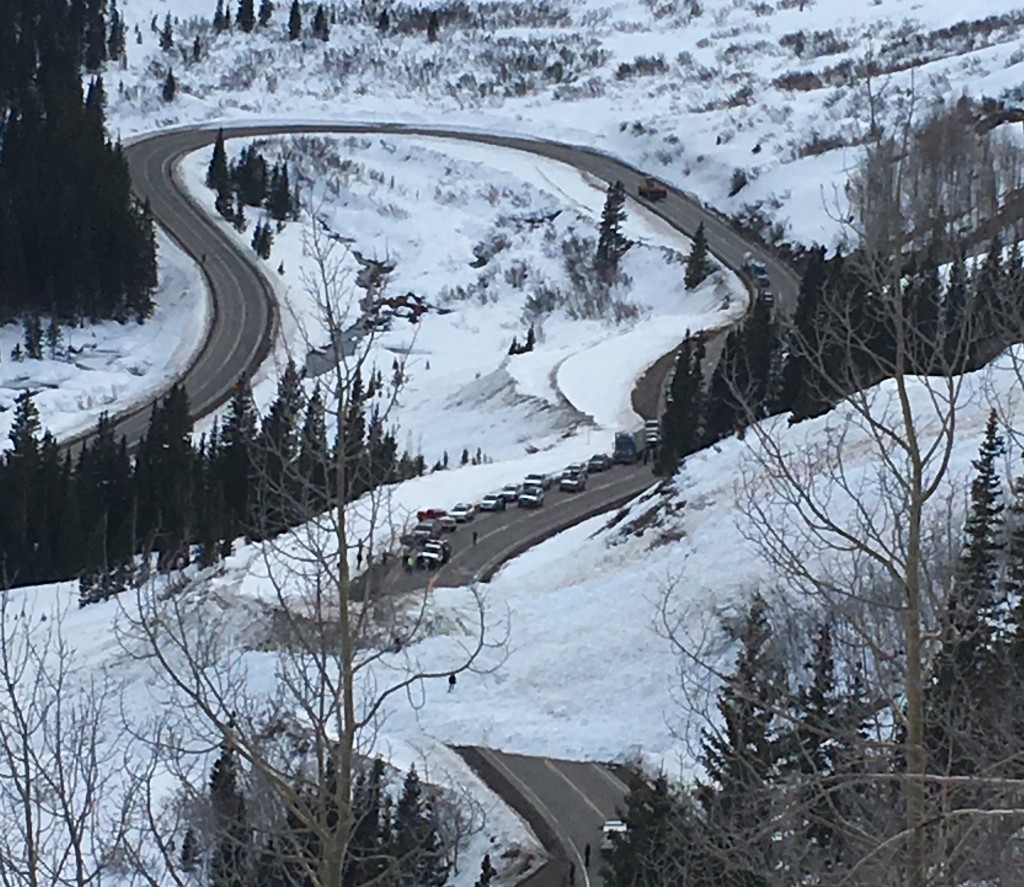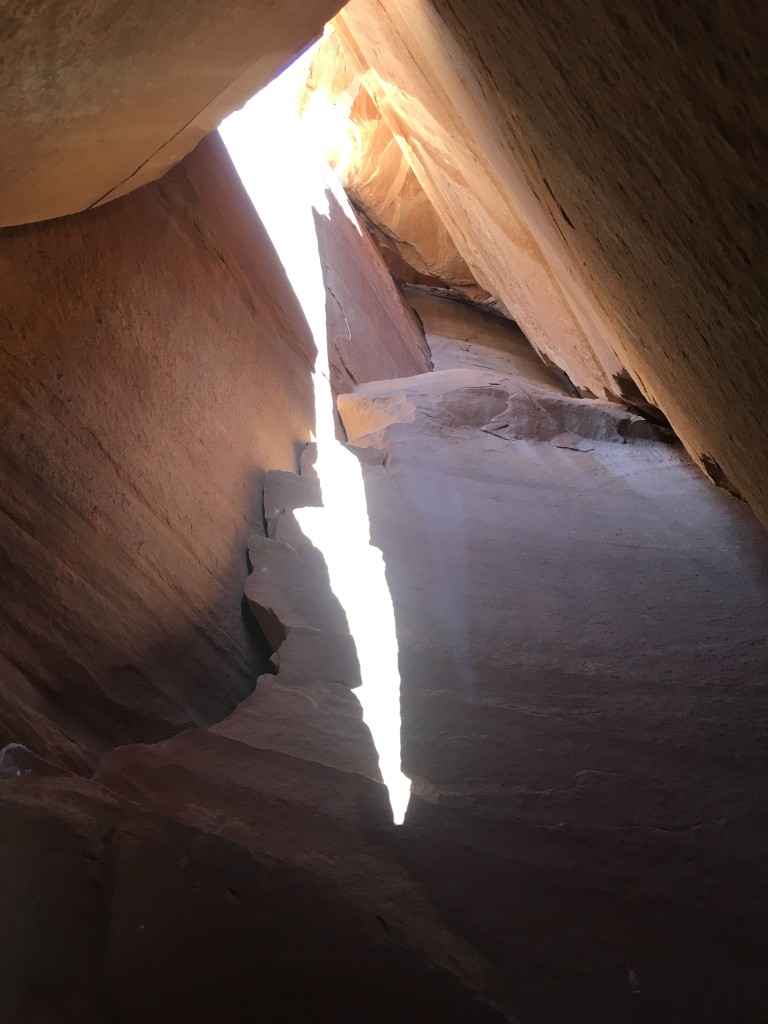After getting showered with powder snow for the tenth time, I look up to see Marcus peering down at me. “Uh, I’m not sure what I should do. My feet are numb.” We are on Otto’s Route, a moderate trad climb that follows the historic first ascensionist’s line up drilled pipe-holes and cut steps on the Independence Monument, a desert tower in the Colorado National Monument.

The snow on the ground was mostly melted. The snow in the cracks and slabs on the route we were climbing was not. We found this out the hard way. This is our rest day activity, and we treated it with the seriousness one would expect of a rest day. We slept in and stuffed a large pizza in our packs, driving late and lazily towards what we expected to be an easy romp up an aesthetic desert tower.
It’s February. For the last two weeks we’ve been racking up pitches in the Ouray ice park. Climb ten to fifteen pitches of ice a day for four or five days, take a rest day to recover. It is Marcus’ idea to climb Otto’s Route on our rest day. I readily agreed. Now I’m yelling up at him: “Screw it dude, just get a piece in to lower off of. This sucks, let’s bail.”
Two pitches in and our rest day romp turns into a gear-leaving bail epic. After excavating cold powder snow out of a vertical handcrack for 60 feet, Marcus’ attempt to reach the first fixed anchors on the route is foiled by an ice covered friction slab. It turns out bare hands and tight climbing shoes are suboptimal snow travel equipment.
After lowering Marcus on a micro nut, we convene on a snow-covered ledge to eat our large pizza, laugh, and make a rappel anchor on a chockstone wedged into the wide crack in front of the belay. We flee, feeling a bit guilty about leaving a nut and some tat on the route but happy to have warm feet and hands. This is the first time in the sandstone desert environment for both of us, and I’m starting to see the Edward Abbey magic.
We got what we came here for — mileage. No where else in the world has the accessibility and sheer number of ice climbs than Ouray, and it has lived up to its reputation as an ideal training ground. The weather has been unseasonably warm the entire time we’ve been here too, taking all the usual cold and misery out of the experience. In terms of goals, both Marcus and I are on track with what we said we wanted out of this month. Check out my trip report for Colorado Ice.

Climbing in Colorado is a much different experience than climbing in the Cascades. On the few climbs I did in Washington, the route descriptions were vague, the approaches long and difficult, the weather shitty. On the backcountry ice climbs we’ve done in Colorado, complicated-sounding approaches were wicked easy, the weather has always been mild, and the climbs have been straight forward. Working with a super small sample size here, but I’m starting to see why people say that success in the Cascades often predicts success in the greater ranges. The difficulties of the Cascades only increase the allure for me, but there’s no better place than where we are now to get strong fast.
One Colorado thing we’re not so stoked about, though, is avalanches. One day after cruising a route in Eureka a few hours faster than we expected we rounded a bend heading back to Ouray to see a massive wet slide had ripped at the top of a drainage and had taken out highway 550 — our only way back home. Driving up to it we realized it was the biggest slide either of us had ever seen. Later classified as R3/D3, the skiier-triggered slide had run for almost 2000 feet, depositing debris fifteen feet deep on a 350 section of road.

Happy with our climb that morning and not particularly bothered by the day of waiting ahead of us, we cut some snow ledges, pulled out the sleeping pads, and slept for a few hours. We woke to a huge line of people sitting in cars — the front-end loader that had been clearing the road had bailed back to Silverton to get a better snow-clearing tool, and the tension in the car line was rising.

With our camp stoves, hot food, sleeping bags, and satisfaction of a day’s work already done we were the envy of the car line. We picked a safe path and hiked to the top of the ridge to get a better look at things and to kill a couple of the seven hours we ended up waiting for the road to be cleared. The wind-loaded gully had ripped all the way to the ground, leaving a muddy and raw wound all the way from the top of the ridge to the bottom. Somehow the skiers that triggered the slide were not buried and sustained no injuries. The avalanche forecast for that day was Moderate above treeline, too. Yikes.
The last few days here we spent at Escalante Canyon, a well kept secret of incredible desert sandstone. We got spanked on splitter cracks and our asses kicked on off-widths. Fun for all — can’t wait to go to Indian Creek.

Next up for me is a NOLS rock climbing seminar in Arizona, where I’ll part ways with Marcus for a few weeks. After that we’ll be spending some quality time with long trad routes at Red Rocks, Nevada — where we’ll meet up with a crew from the Yale Climbing Team on spring break. The ice has been nice, but we’re both itching to get on some desert rock. See ya around!
Leave a Reply to Megan Cancel reply